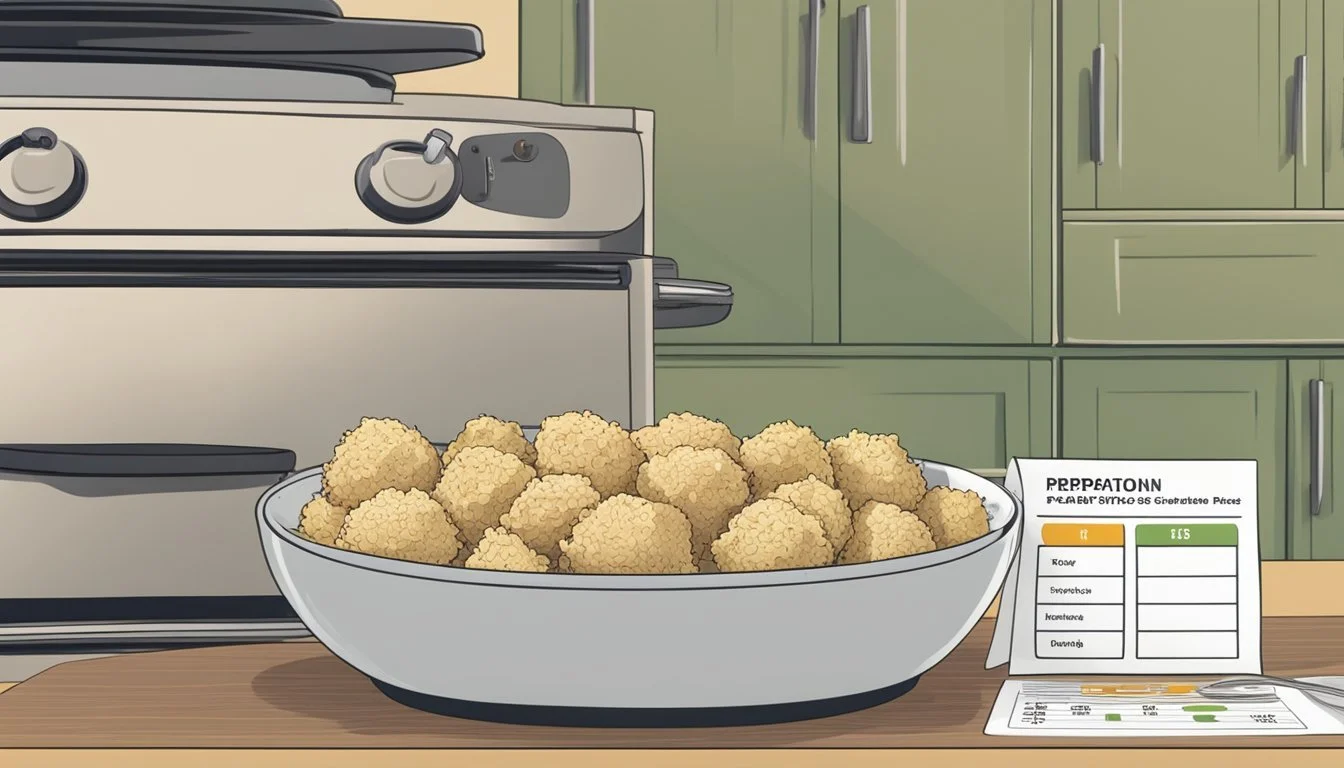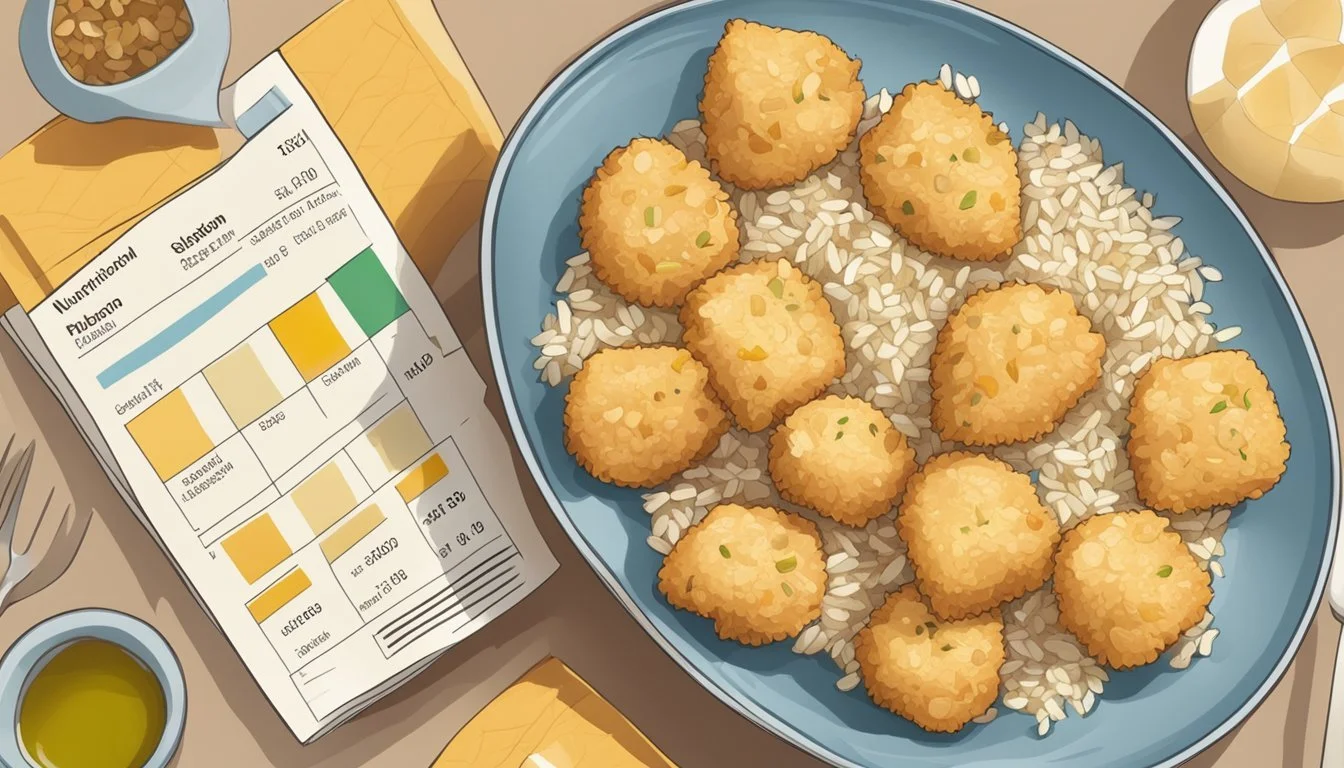How Long Do Chicken and Rice Bites Last?
Storage and Freshness Guide
Chicken and rice bites can be a delicious and convenient option for meal prep, providing a healthy balance of protein and carbohydrates. Knowing how long they last is essential for ensuring both safety and quality. When stored in the refrigerator, chicken and rice bites can last up to four days. It is important to keep them in an airtight container to maintain freshness.
For those looking to extend the shelf life, freezing offers a great solution. Chicken and rice bites can last up to three months in the freezer if properly stored. When ready to consume, thaw them in the refrigerator overnight and reheat to an internal temperature of 165°F (74°C).
Maintaining appropriate storage conditions helps retain the meal's nutritional benefits and ensures safety. Proper preservation techniques are crucial to enjoy the convenience and healthiness of chicken and rice bites throughout the week.
Essential Ingredients
Choosing the right ingredients is crucial for making delicious chicken and rice bites. The choice of chicken, rice varieties, and seasonings can significantly impact the flavor and texture of your dish. Additional ingredients can also elevate your meal.
Chicken Selection
Using boneless, skinless chicken breasts is ideal for chicken and rice bites. They cook quickly and evenly and offer a tender and juicy texture. Chicken breasts should be cut into bite-sized pieces and seasoned well.
Freshness is key; ensure the chicken is fresh, not frozen, for the best flavor and texture. If preferred, boneless, skinless chicken thighs can be used as an alternative. They add a slightly richer taste and are a bit juicier.
Rice Varieties
The choice of rice can greatly affect the dish. Long-grain white rice or basmati rice are popular choices due to their fluffiness and ability to absorb flavors well.
For a healthier twist, consider cauliflower rice. It adds a different texture and is a low-carb alternative. Brown rice can also be used; it has a nuttier flavor and more nutrients.
Cooking method matters too. Ensure the rice is well-cooked but not mushy, allowing it to blend seamlessly with the chicken.
Seasonings and Flavors
Seasonings are essential for flavorful chicken and rice bites. Salt and pepper are the basics. Adding garlic powder, onion powder, and paprika brings depth and warmth to the dish.
For an Italian twist, use Italian seasoning. Cayenne pepper offers a spicy kick. Using fresh garlic rather than powder can provide a more robust garlic flavor.
Adding butter or unsalted butter gives a rich, creamy texture. Olive oil is also a great choice for cooking the chicken and rice.
Additional Ingredients
Additional ingredients can enhance the dish. Fresh parsley adds a burst of color and freshness. Grated parmesan cheese provides a savory, umami-rich element.
Consider incorporating vegetables like bell peppers or peas for added nutrients and flavor. Butter can also be used to finish the dish, providing a silky texture.
Adding these elements thoughtfully can transform simple chicken and rice bites into a gourmet meal.
Preparation Guide
Creating chicken and rice bites that are flavorful and moist starts with careful preparation. Focus on cooking techniques, recipe tips, and using a meat thermometer to ensure perfectly cooked bites.
Cooking Techniques
Oven Baked: Preheat the oven to 425°F. Arrange the chicken bites, seasoned with a mix of spices, on a baking sheet. Bake for 15-20 minutes until golden brown and crispy. Ensure even cooking by flipping halfway through. This method yields quick and easy-to-make bites.
Pan-Fried: Heat a large skillet over medium-high heat, coat with oil and add the chicken bites. Cook for 5-8 minutes, flipping every 2-3 minutes. Add butter at the end for extra tenderness and flavor. This technique keeps the bites moist and tender.
Recipe Tips and Variations
Spice Mixes: Customize the flavor by mixing different spices like paprika, garlic powder, cayenne, and Italian seasoning. Adding brown sugar and cornstarch helps achieve a golden brown crust.
Additional Ingredients: Enhance flavor with lemon zest or fresh herbs. For a versatile twist, try threading the chicken on skewers and broiling for approximately 12 minutes.
Serving Suggestions: These bites are great in wraps, salads, or as appetizers. Drizzle with a sauce or dip in your favorite dressing to elevate the taste experience.
Using a Meat Thermometer
Temperature Check: Always use a meat thermometer to ensure the chicken is cooked properly. Insert the thermometer into the thickest part of the bite without touching the bone. The internal temperature should reach 165°F (74°C) to be safely cooked.
Consistency: Checking the temperature helps achieve the perfect level of doneness, avoiding undercooked or overly dry bites. This step is crucial for maintaining both safety and optimal flavor.
Equipment: Choose a digital meat thermometer for accurate and quick readings. Regularly calibrate your thermometer to ensure reliability and consistent cooking results.
Proper Storage
Proper storage of chicken and rice bites ensures they remain safe to eat and retain their flavor. For the best results, it is crucial to store them correctly after cooking and use suitable containers to prevent contamination.
Storing Freshly Cooked Bites
To store freshly cooked chicken and rice bites, allow them to cool down to room temperature first. Placing hot food directly in the refrigerator can cause the temperature inside to rise, potentially leading to bacterial growth on other stored food items.
Once cooled, place the bites in a clean, dry container. Refrigerate them at 40°F (4°C) or lower. This temperature slows down bacterial growth and helps keep the bites safe.
Make sure the bites are cooked through before storing. This reduces the risk of any harmful bacteria being present in the leftovers.
Airtight Containers
Using airtight containers is crucial for storing chicken and rice bites. These containers prevent air and moisture from entering, which helps maintain the bites' texture and flavor over several days.
Label the containers with the date of storage. This helps track how long they have been in the fridge, ensuring leftovers are consumed within four days to prevent spoilage.
Airtight containers also prevent cross-contamination with other food items, keeping chicken and rice bites safe and fresh. Be sure to use containers that are clean and free from cracks or damage.
Reheating and Serving Suggestions
Proper reheating can make your chicken and rice bites just as enjoyable as when they were first cooked. Considering safe practices and pairing them with complementary sides can add variety to your meals.
Safe Reheating Practices
Reheating chicken and rice correctly ensures that the food remains safe to eat and retains its moisture. For best results, use gentle heat. In the oven, preheat to 350°F (175°C) and reheat for 15-20 minutes. Cover the dish with foil to prevent drying out.
Microwaving is faster. Place the bites on a microwave-safe plate, sprinkle a bit of water over them, and cover with a microwave-safe lid. Heat on medium power for 2-3 minutes.
Avoid reheating chicken and rice more than once to prevent bacterial growth and maintain food safety.
Pairing with Sides
Chicken and rice bites pair perfectly with various sides. For a light meal, consider a fresh salad with a vinaigrette. The crisp texture and tangy dressing complement the savory bites well.
For something heartier, serve with soup—a chicken noodle or minestrone adds warmth and depth. A garlic butter sauce can be drizzled over the bites for extra flavor, or serve them with pasta in a creamy sauce for a filling option.
Explore different combinations to keep meals interesting and nutritious.
Serving as a Main or Appetizer
Chicken and rice bites are versatile enough to be served as a main dish or an appetizer. As a main course, provide at least 6-8 bites per person with sides like steamed vegetables or bread.
When serving as an appetizer, arrange them on a platter with dipping sauces such as garlic butter or spicy mayonnaise. Consider smaller portions to allow guests to enjoy other appetizers.
Ensure each serving is presented attractively to enhance the culinary experience, whether as a light starter or a fulfilling main dish.
Nutritional Information
Chicken and rice bites offer a balanced mix of essential nutrients. The following breakdown highlights key aspects like calories, macronutrients, and vitamins and minerals to help you understand the nutritional value.
Caloric Content
A typical serving of chicken and rice bites provides around 350-400 calories. This can vary based on specific ingredients and preparation methods. One cup of cooked white rice contributes about 206 calories, while four ounces of cooked, skinless, boneless chicken breast adds approximately 165 calories.
When preparing chicken and rice bites, it’s crucial to monitor portion sizes to keep the calorie count in check. Using lean chicken and minimizing added fats can help maintain a balanced dish.
Macronutrients
Chicken and rice bites are rich in protein and carbohydrates. A four-ounce serving of chicken breast delivers around 31 grams of protein, essential for muscle repair and growth.
One cup of cooked white rice provides roughly 45 grams of carbohydrates, offering a steady energy source. These bites are low in fat, with chicken breast containing around 3.6 grams of total fat, 1 gram of which is saturated fat.
Vitamins and Minerals
Chicken and rice bites are packed with essential vitamins and minerals. They contain significant amounts of iron, potassium, and calcium. Chicken provides B vitamins, such as vitamin B6 and niacin, important for metabolic functions.
White rice offers trace minerals like manganese and selenium. However, these bites are typically low in fiber and should be paired with vegetables or whole grains to enhance nutritional intake. Moderate levels of sodium (about 132mg per serving) and cholesterol(roughly 73mg per serving) are also present.
Creative Enhancements
Discovering ways to elevate chicken and rice bites can transform a basic meal into a gourmet experience. From savory toppings and different cooking methods to adding bold flavors, the possibilities are endless.
Topping and Sauce Ideas
Toppings and sauces can vary from simple to gourmet, intensifying the flavor and appeal of chicken and rice bites. BBQ sauce is a popular addition, providing a smoky taste. For a richer flavor, garlic butter chicken bites topped with fresh herbs like parsley or chives can be a delectable option.
Sprinkle lemon zest and red pepper flakes for a zesty and mildly spicy kick. A touch of honey mustard sauce or a dollop of sriracha mayo can bring your bites to another level. Cheese options like shredded cheddar or Parmesan add a creamy texture when melted.
Alternative Cooking Methods
Exploring diverse cooking methods ensures that chicken and rice bites achieve different textures and flavors. Baking them in the oven till they reach a golden perfection with a crispy exterior is a popular method. Pan-frying in a non-stick skillet can give a delightful sear while keeping the inside juicy.
For a healthier route, consider steaming the bites, keeping them tender yet fully cooked. Air frying offers a middle ground between baking and frying, producing a crispy texture with less oil. Grilling adds a smoky essence that can enhance the overall taste, especially when brushed with BBQ sauce.
Adding a Flavor Twist
Injecting a colorful medley of flavors can make chicken and rice bites extraordinary. Marinate the chicken in lemon zest, garlic, and olive oil prior to cooking to infuse them with a citrusy tang. Incorporate red pepper flakes during the marination for an added hint of spice.
For a unique twist, mix finely chopped herbs like cilantro or basil into the rice. Experiment with adding sesame oil or soy sauce for an Asian-inspired flavor profile. Incorporating a drizzle of balsamic glaze or truffle oil after cooking can elevate the dish to a whole new culinary level.







